A cultural odyssey through Marrakech
Marrakech is a shopper’s paradise but the hassle of the souks can wear down even the most hardened fashionista. Swap the markets for the cultural gems that the city has to offer, says Jane Duru, and you’ll be handsomely rewarded for your effort.
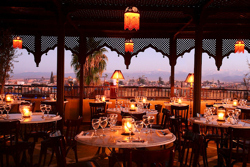 Enjoy great views of the medina and the mountains from Le Salama's terrace
Enjoy great views of the medina and the mountains from Le Salama's terraceLe Salama
It's all very different from a decade ago, when Morocco was a destination for only two kinds of people: intrepid travellers looking for a new adventure, or bohemian types seeking creative inspiration. The adventure-seekers have moved on to seek pastures new, whilst the creative contingent remains, but in recent years, they've been joined by a new crowd, lured by the promise of a gateway city into the Arabian world, any worries soothed by the country's relatively liberal culture and political stability. But whilst traditionally its main attractions have been sun and shopping, when it comes to Marrakech's cultural offerings, many tourists never scratch the surface. Marrakech is much more than its markets, as the Biennale aims to show.
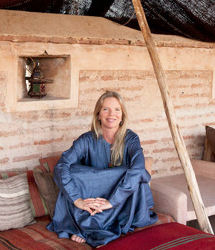 The Marrakech Biennale is the brainchild of Vanessa Branson
The Marrakech Biennale is the brainchild of Vanessa BransonLeila Alaoui
In 2005, Vanessa Branson (sister of Richard) founded the Marrakech Biennale out of frustration with a Western portrayal of the state that was at odds with her experience. The aim was to produce a festival to promote the cultural side of Marrakech to tourists and locals alike. This year, the visual part of the festival consisted of the Higher Atlas exhibition, which commissioned works from 39 international artists under the theme of Surrender. Outside the exhibition, a variety of screenings, debates and talks saw actor Dominic West, Ruby Wax and novelist Ben Okri as just some of the luminaries taking part.
Such guests are no doubt part of the attraction but there’s also a sense that the city is seeing something of a resurgence of interest in both foreign and domestic art, with last year's Marrakech Art Fair attracting growing numbers of domestic and international galleries, and the Marrakech Film Festival an increasingly important stop on the film circuit. At the party, I encounter a group of monied art enthusiasts, patrons of the Venice Biennale. They were regulars on the art circuit, doing the rounds of Miami, Venice, Frieze and now Marrakech, intrigued and attracted to the possibility of enjoying art in the less cloistered surroundings of the medina.
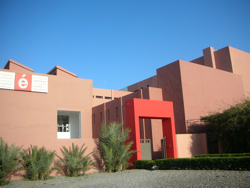 ESAV is the only school for creatives in the city
ESAV is the only school for creatives in the cityJane Duru
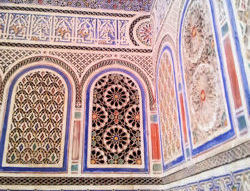 Marvel at the beautiful stucco work in El Bahia palace
Marvel at the beautiful stucco work in El Bahia palaceJane Duru
If the popularity of the festival is anything to go by, the art scene in Marrakech is certainly flourishing, but there are plenty of other cultural gems to be enjoyed other than contemporary art, as I discover the next day.
“Come on my laydeeez.” Yusuf, our knowledgeable but slightly cheesy tour guide (we're later elevated to the status of "princesses"), is leading a group of us on a tour of Marrakech’s landmarks. We start at Dar Si Said (Riad Zitoun el-Jedid), the arts and crafts museum which houses centuries-old examples of Moroccan artistry; from the wonderful faded carpets whose craftmanship eclipses any I’ve seen in the souks, to the ornate and weighty-looking silver jewellery that once adorned the heads of Tuareg women.
With the museum captions in French and Arabic, Yusuf’s commentary adds a much welcome layer of meaning to the objects on display. Take the carpets for instance - hanging on the wall, they are brought to life by his explanations; the meandering zigzag patterns in the Tuareg carpet signify the tribe's nomadic, peripatetic existence, the multi-textured carpet of the Glaoa, woven and knotted and embroidered as it is, mirrors the mountainous terrain of the Atlas mountains where they lived. If you plan to visit, it's definitely worth having a guide, to place what you're seeing in its historical context and add some depth.
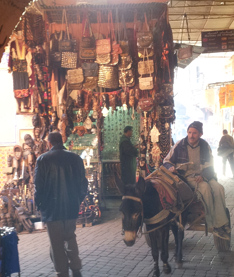 Marrakech is great for shopping but there's lots more on offer
Marrakech is great for shopping but there's lots more on offerJane Duru
We finish at the Saadian tombs in the Kasbah area of the city. Built in the 16th century, the tombs were only discovered in 1917. Around 60 members of the once-powerful Saadian dynasty are buried here. A small winding alleyway leads you into the grounds, where there are colourful zellige (tiled) graves all around. The main attraction however, is the larger mausoleum containing the atmospheric Hall of Twelve Columns where the Saadian sultan and princes are buried in tombs made of Italian marble. A further smaller mausoleum houses the Sultan's mother. Get here early, as queues to see the Sultan's tomb can form quickly when it's busy.
ROCK THE KASBAH
Of course, culture is about the people as well as historical buildings and artefacts. You could easily while away hours meandering down back alleys, people-watching and imagining what's behind the many mysterious doors lining the streets. The Kasbah district isn't far from the beaten track (this is where Bab Agnaou gate, once the main entrance into the medina, is located) but the effect of the lower ratio of tourists to locals here is tangible. This is where Marrakechis gather to socialise and do their shopping, and the neighbourhood hums with the pace of everyday life, adding an extra dimension to your experience of the city. As one of the art patrons puts it, 'every time you come to Marrakech, you peel back another layer.'
The Higher Atlas exhibition runs until 3 June, www.higheratlas.org.
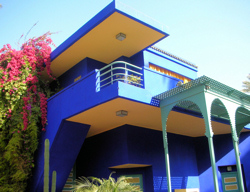 The colourful Jardins Majorelle are a must-see
The colourful Jardins Majorelle are a must-seeJane Duru
• Don't miss Villa Majorelle, the second home of Yves Saint Laurent and set in the beautiful Jardins Majorelle. Outside the medina, the colourful gardens provide an oasis of calm amidst the frenetic pace of the city. The fashion designer's memorial can be seen here too.
• If you're keen on fitting in some shopping as well as culture, don't worry - many of Marrakech's cultural sights are located near the main souks and Djemaa El Fna square. Head there for carpets, rugs and as many passmentarie as there are colours. But beware, anyone purporting to be ‘pure’ Berber, is more likely to be capitalising on the allure attached to that label than genuine. And don't forget to haggle!
• Head to the exhibition's namesake, the snow-capped Atlas mountains, just 64km (40 miles) outside the city for dramatic views and treks for all abilities. Stay at the charming Kasbah du Toubkal, a fortified Berber retreat set high in the mountains. For more information about where to stay in Marrakech, see our review of the Angsana Riads collection.
Do you have any Feedback about this page?
© 2025 Columbus Travel Media Ltd. All rights reserved. No part of this site may be reproduced without our written permission, click here for information on Columbus Content Solutions.









 You know where
You know where